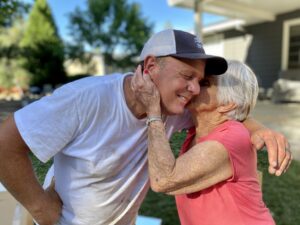“Hi mom, how did it go at your doctor’s appointment today?”
“Well, they said that I needed a new medication to help me remember things.”
“What was the diagnosis that they were treating?”
“I’m not really sure…”

It used to be that she took you to the doctor, sat in the vinyl chair next to the paper covered recliner, asked the doctor all the right questions and filled out all the forms.
Now it’s you in that vinyl chair and she is sitting on the paper covered recliner quietly, like she used up all her questions when she asked them on your behalf—all those years ago.
When did you start realizing that you wanted to attend doctor’s appointments together?
It may seem easier to go to appointments with your older adult so you can get the whole story. Although it can be a bit of a tightrope as you respect their independence and ask the tough questions.
Out of love and necessity, I’ve been an advocate for a seriously ill family member in the hospital and at doctor appointments literally hundreds of times over the past 19 years.
I’ve learned a few things in that time. I’ve summarized it for you.
Six Ways to Be a Bold Medical Advocate
#1. You are the customer. There is something about a doctor title that can be intimidating, but it doesn’t change the fact that they are there to make sure your needs are met. Also, you are paying for the care.
#2. Arrive with your questions written out and don’t let the doctor leave the room until you’ve taken the time you need to make sure all the questions were asked and the answers understood. That means even if the doctor is standing at the door waiting while you are reviewing your notes.
#4. If you aren’t given the expertise, time and attention you need, find a new doctor. You don’t need to tolerate care that doesn’t meet your needs. It’s even okay if it’s because the doctor’s attitude or demeanor isn’t a fit.
#5. Ask for what you need. One time (to avoid embarrassing my family member) at check in I told the receptionist that I wanted to talk to the doctor privately at some point. Another time I asked the nurse to use the term “coach” instead of “hospice” in front of my dad. Many times I asked for a hallway conversation.
#5. Make sure you know how to contact the doctor for follow-up concerns or questions. Weekend? After hours? Text? Email? As information sinks in, more questions will likely arise.
#6. Don’t hesitate to ask the doctor to use plain terms and simple explanations if they are using terminology that isn’t easy to understand. It’s okay that you (probably) didn’t go to medical school. I have some training through Grey’s Anatomy, but it may not be complete.
Use the right tools
One of the tools I have always used is a portable medical planner. I tried keeping notes on my phone, but found that it took too long to bring it up and type in answers, etc. so I used all my experience at the doctor’s office and hospital to create what I believe people need. I even designed the cover and taught myself InDesign so I could do the layout. Then I added pockets for organizing all the things. Just today, we got this feedback which delighted me…
“I received the GoKit yesterday and I was very impressed. Here are some of my first impressions:
- Loved the size. Easy to carry.
- I like that it doesn’t look like a medical document planner. That was important for my family because my mom wanted to look at our homemade notebook and we had to disguise it.
- I like how the book reminds, encourages and speaks to the caregiver in the blue bubbles.
- It is great that the divider pages are color pages. Relaxation technique built in!
- If I had received this from my employer, I would have felt totally supported and cared about!”
Click here to download a page from the “Doctor” section of the planner. Use it to help you prepare and navigate the next appointment for your older adult.
May you find joy in loving one another well.
Elizabeth Dameron-Drew is the Co-founder and President of Ways & Wane. She walked closely with her own father through his years of waning. She lives near Seattle with her two teenage sons, husband and two rescue dogs.



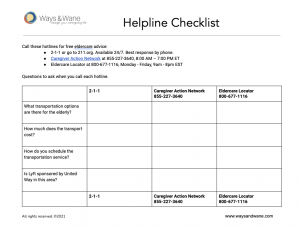
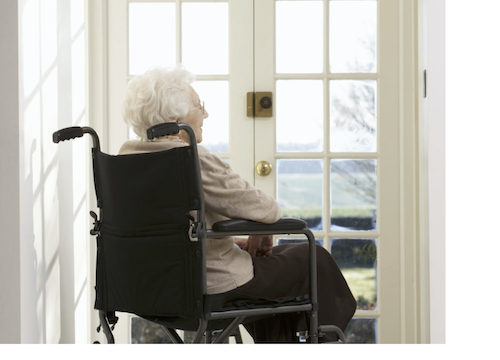 In general, try to understand the situation before you begin expressing your concerns. Let’s say you are concerned that your senior isn’t getting their physical therapy. Bring it up with the most appropriate person by commenting in a neutral way: “My dad said something about not having PT. I’m curious to understand his current PT schedule and how that’s going.” You’ll likely get a much better response than, “Why is my dad not getting his PT?!”
In general, try to understand the situation before you begin expressing your concerns. Let’s say you are concerned that your senior isn’t getting their physical therapy. Bring it up with the most appropriate person by commenting in a neutral way: “My dad said something about not having PT. I’m curious to understand his current PT schedule and how that’s going.” You’ll likely get a much better response than, “Why is my dad not getting his PT?!” Do you take PTO at work to help your aging parents? Medical procedures like joint replacements, heart procedures and cancer treatments are common among those over age 65.
Do you take PTO at work to help your aging parents? Medical procedures like joint replacements, heart procedures and cancer treatments are common among those over age 65. 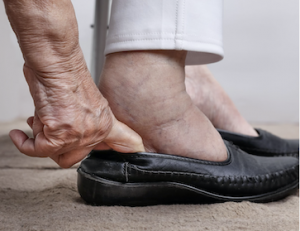
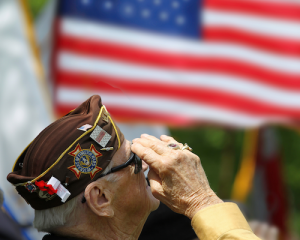 One of our GoKit users found the perfect assisted living facility in Florida for her father. Although at over $4,000 per month, the payments were quite a burden. After a few months, she discovered that her father was eligible for a VA housing benefit of $2,000/month, which was retroactive to the time he moved in. While not every veteran is eligible for this benefit, the VA caregiver program expanded on October 1, 2020 to offer more services.
One of our GoKit users found the perfect assisted living facility in Florida for her father. Although at over $4,000 per month, the payments were quite a burden. After a few months, she discovered that her father was eligible for a VA housing benefit of $2,000/month, which was retroactive to the time he moved in. While not every veteran is eligible for this benefit, the VA caregiver program expanded on October 1, 2020 to offer more services. Machines beeping in the hospital ICU.
Machines beeping in the hospital ICU.
